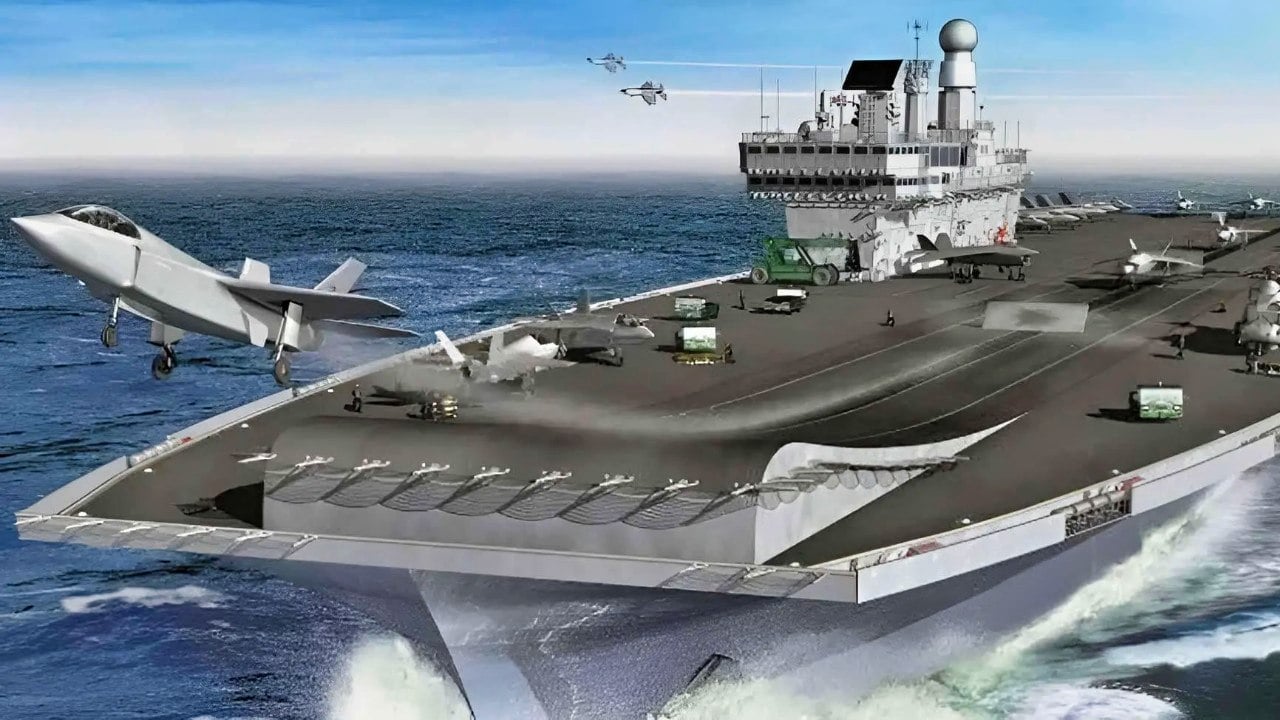It will be difficult for Britain’s aircraft carrier program to overcome the “yuck factor.” Both the HMS Queen Elizabeth and HMS Prince of Wales have endured mechanical problems, which is an embarrassment for the Royal Navy.
One was to lead an extensive NATO naval exercise with 40 ships recently – the most prominent maritime wargames since the Cold War.
Back in early 2024, Queen Elizabeth was going to leave Portsmouth Naval Base to be the flagship during the NATO drills, but it had problems with its propeller shaft.
The deployment was scrubbed.
Time For Plan B
Repair workers, engineers, and technicians had to employ Plan B and get the Prince of Wales ready to take the Queen Elizabeth’s place.
The Prince of Wales has already succumbed to a checkered history. It broke down off the Isle of Wight 1.5 years ago.
Again, the problem was its propeller. The Prince of Wales will now lead Exercise Steadfast Defender – which will take place off Norway.
Are the Two Aircraft Carriers ‘Lemons?’
These carriers are like problematic cars that keep getting recall notices from the manufacturer, and it is up to the drivers to take it to the dealers for repair.
This is not the message the Royal Navy wants to send to the world in an era where NATO needs to be in its best shape to counter Russian maritime influence.
“The cause of the issue with HMS Queen Elizabeth is wear and tear of her starboard propeller shaft coupling,” according to the Independent UK.
Prince of Wales Was Out of Action, Too
The Prince of Wales had the same problem.
It had to be towed back to the Isle of Wight 18 months ago. When it returned to port, divers inspected the carrier, and they did not like what they found.
The 33-ton propeller “had malfunctioned with a coupling holding it in place breaking.” It took nine months to fix the Prince of Wales.
Then, the Ministry of Defense got involved and claimed that the propeller issues on both vessels were not linked and were separate issues.
Call me skeptical about that statement. These modern ships should not have the same problems. The propellers clearly have identical manufacturing faults, and an after-action review is needed to identify the confounding troubles on these carriers.
More Specifics About the Problem
A spokesman for the MoD said, “The issue identified is with the ship’s shaft couplings. The ship’s propeller shafts are too big to be made from a single piece of metal, so each shaft is made from three sections, which are connected using shaft couplings, which bind the shaft sections together.”
This is a “dog ate my homework” reply to a serious problem. It explains it properly but reeks of excuses that cannot be used in the Royal Navy. The correct reply is that this will be fixed soon, and the navy takes full responsibility for the failure in design.
I’m not sure I have faith in the Royal Navy. Its submarine fleet has redeeming features, but there are sometimes not enough surface ships to form a proper strike group.
The British have backup intentions to use another country’s destroyers and frigates to conduct an appropriate task force when patrolling for NATO.
This does not give me confidence that the United Kingdom has its intentions on projecting power in Europe.
What Is the Overall Maritime Strategy for Britain?
What does the Ministry of Defense want to accomplish?
Is this a Blue Water navy, or is it more for homeland defense?
These questions must be answered. Time, money, and resources are tight for the British military. The navy looks weak and unprepared. The Prince of Wales was out of action for three-fourths of a year. That is unacceptable. What if there are other issues besides the propellers?
Hopefully, designers and engineers will pour over the carrier and try to identify problems before these carriers conduct important missions.
It’s About Faulty Political Leadership
Prime Minster Keir Starmer is struggling politically, and it doesn’t seem like his Secretary of State for Defense of the U.K. John Healey is up to the challenge. Healey has only been in charge since July of 2024, so in fairness, we should give him a chance to get acclimated to his role. However, he needs to get a better handle on the Royal Navy.
He could start by investigating these carrier propeller problems. One knock on Healey is that he has no prior military policy experience. He has mainly been assigned to treasury and finance roles in the British government. This could help him with defense budgets, and that is valuable, but he may not know the details about fixing carriers.
The Royal Navy needs to get its act together. Yes, carriers are complex ships, and even the United States has cost overruns and repair delays in its carrier programs, but the British should operate with higher standards.
These unacceptable breakdowns will give more fodder for critics who believe the British Navy has seen better days.
About the Author: Dr. Brent M. Eastwood
Brent M. Eastwood, PhD, is the author of Don’t Turn Your Back On the World: a Conservative Foreign Policy and Humans, Machines, and Data: Future Trends in Warfare, plus two other books. Brent was the founder and CEO of a tech firm that predicted world events using artificial intelligence. He served as a legislative fellow for U.S. Senator Tim Scott and advised the senator on defense and foreign policy issues. He has taught at American University, George Washington University, and George Mason University. Brent is a former U.S. Army Infantry officer. He can be followed on X @BMEastwood.

